The timeless brilliance of the Hindu epic Mahabharata, illuminated by the mysterious art of Balinese shadow theatre, enacted to the percussive metallophones of traditional gamelan ensembles.
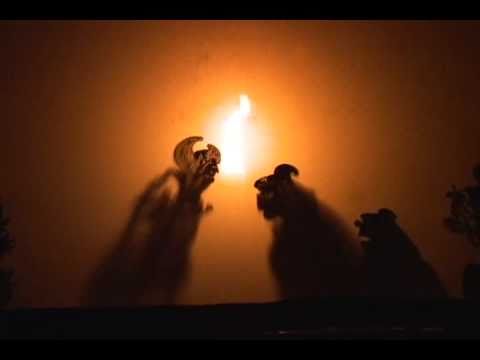
Watch this video on YouTube
Arjuna‘s Meditation: An excerpt from the Mahabharata, performed by Shadowmaster I Wayan Nartha.
An Epic Tale, A Bloody War, A Guide to Living
Telling stories of battles or encounters with mysterious supernatural animals starts out as a night’s entertainment around the fire. Over time the best tales become legendary and grow into myths that illuminate the way forward for the faithful.
The Mahabharata began as a series of orally-transmitted folk stories and myths in the Hindu tradition from India. It has transformed into the longest known epic poem, narrating the travails of the Bharata Dynasty in the 13th-14th Century B.C. Kuruksetra War, relating the fates of the Kaurava and the Pandava princes. Hence, the series of legends about a bloody fratricidal war grew into treatises on philosophy and devotion, and the meaning of human existence. In volumes ten times Homer’s Illiad and the Odyssey combined, the Mahabarata contains the four “goals of life” or purusartha, the meaning of human existence: dharma (law), artha (money), kama (pleasure) and moksha (liberation).
STORY: Legong Film: Balinese Dream Dance of Nymphs in Heaven
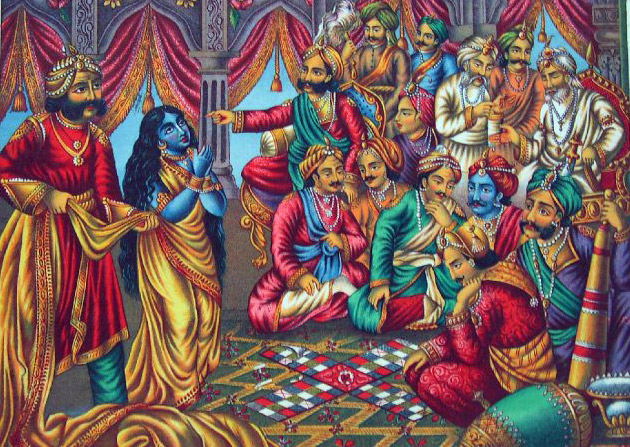

With civilizational significance comparable to the Bible or the Qur’an, told in a maybe unstructured and chaotic way by the Hindu holy man Vyasa. Compiled between the 8th and 9th centuries B.C., all the additions and diversions added over the years make it a bit unwieldy to retell with any brevity. The original story of the Bharata war was composed by charioteer-bards known as sutas, who accompanied the king’s entourage to the battlefield, and threw together poems eulogizing their feats in war. From the fifth century BCE, the Brahmins caught hold of the orally-transmitted work and committed it to the written word.
Krishna on his battlefield treachery in ‘Mahabharata’ says, “What they are doing is adharma (immoral, lawless); what we are doing is also adharma, but we are doing it with an intention of establishing dharma (“the right way of living”). They are doing it with the intention of establishing adharma.”
Among the principal works and stories in the Mahabharata are the Bhagavad Gita (added between 200 BCE and 200 CE which brought Krishna to prominence), the story of Damayanti, an abbreviated version of the Ramayana (narrates the struggle of the divine prince Rama to rescue his wife Sita from the demon king Ravana), and the story of Rsyasringa, often considered as works in their own right.
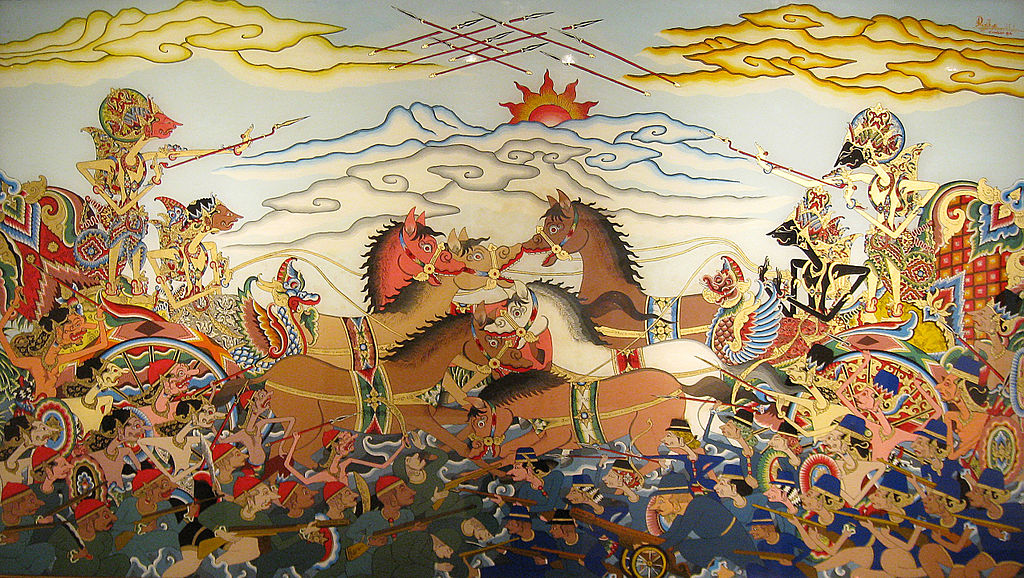

Myths Told in Shadow in Indonesia
Wayang is a form of puppet theatre art found in Indonesia, wherein a dramatic story is told through shadows thrown by puppets and sometimes combined with human characters. The art form celebrates Indonesian culture and artistic talent dating back to the 9th Century, and has been designated by UNESCO as a Masterpiece of Oral and Intangible Heritage of Humanity. Its origins are traced to medieval era spread of Hinduism by Indian merchants and the arrival of leather-based puppet arts called Tholu bommalata from southern India.
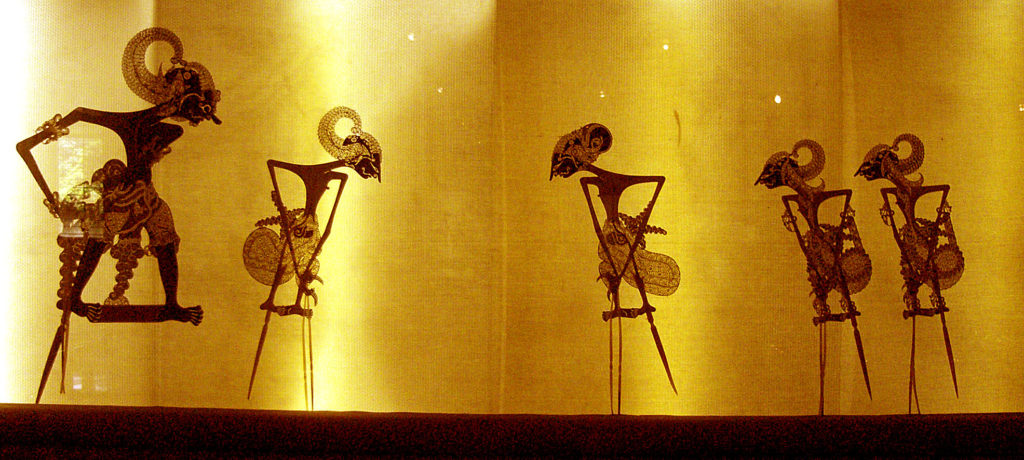

Wayang refers to the entire dramatic show. Sometimes the leather puppet itself is referred to as wayang. The dalang, an artist and spiritual leader, narrates the story, controls the figures, and sings the parts of the characters. Traditionally, it played out in a ritualized midnight to dawn show, and people watch from both sides of the screen. Performances are accompanied by a gamelan orchestra in Java, and by gender wayang (a smaller gamelan ensemble) in Bali. The dramatic stories play out mythologies, such as episodes from the Hindu epics the Ramayana, the Mahabharata, as well as local adaptations of cultural legends.
“How, O Madhava (Krishna, husband of Lakshmi Goddess of Fortune, and slayer of the demon Madhu) can we be happy by killing our own kinsmen? Even if these, with judgments perverted by avarice, do not see the evil that ariseth from the extermination of a race, and the sin of internecine quarrels, why should not we, O Janarddana, who see the evils of the extermination of a race, learn to abstain from that sin? A race being destroyed, the eternal customs of that race are lost; and upon those customs being lost, sin overpowers the whole race.” — Arjuna in the first chapter of the Bhagavad Gita
STORY: Post-Indigenous Microtones: Kraig Grady’s Anaphoria Island
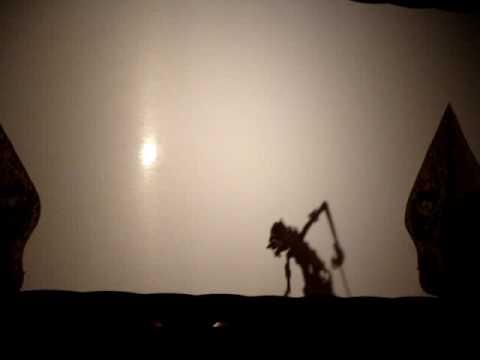
Watch this video on YouTube
Mahabharata Performance: Wayang Kulit Jawa: Arjuna Slays a Giant
‘O foremost of kings, defeated at dice the Pandavas departed from hence and travelling for three days and nights they at length reached those woods that go by the name of Kamyaka. O king, just after the dreadful hour of midnight when all nature is asleep, when man-eating Rakshasas of terrible deeds begin to wander, the ascetics and the cowherds and other rangers of the forest used to shun the woods of Kamyaka and fly to a distance from fear of cannibals. And, O Bharata, as the Pandavas were at this hour entering those woods a fearful Rakshasa of flaming eyes appeared before them with a lighted brand, obstructing their path. And with outstretched arms and terrible face, he stood obstructing the way on which those perpetrators of the Kuru race were proceeding.
‘With eight teeth standing out, with eyes of coppery hue, and with the hair of his head blazing and standing erect, the fiend looked like a mass of clouds reflecting the rays of the sun or mingled with lightning flashes and graced with flocks of cranes underneath on their wings. And uttering frightful yells and roaring like a mass of clouds charged with rain, the fiend began to spread the illusion proper to his species. Hearing that terrible roar, birds along with other creatures that live on land or in water, began to drop down in all directions, uttering cries of fear. And in consequence of the deer and the leopards and the buffaloes and the bears flying about in all directions, it seemed as if the forest itself was in motion. And swayed by the wind raised by the sighs of the Rakshasa, creepers growing at a great distance seemed to embrace the trees with their arms of coppery leaves.
‘And at that moment, a violent wind began to blow, and the sky became darkened with the dust that covered it. And as grief is the greatest enemy of the object of the five senses, even so appeared before the Pandavas that unknown foe of theirs. And beholding the Pandavas from a distance clad in black deer-skins, the Rakshasa obstructed their passage through the forest even like the Mainaka mountain. And at the sight of him never seen before the lotus-eyed Krishna, agitated with fear, closed her eyes. And she whose braids had been disheveled by the hand of Dussasana, stationed in the midst of the five Pandavas, looked like a stream chafing amid five hills.
‘And seeing her overwhelmed with fear the five Pandavas supported her as the five senses influenced by desire adhere to the pleasures relating to their objects. And Dhaumya of great (ascetic) energy, in the presence of the sons of Pandu, destroyed the fearful illusion that had been spread by the Rakshasa, by applying various mantras, calculated to destroy the Rakshasa. And beholding his illusion dispelled, the mighty Rakshasa of crooked ways, capable of assuming any form at will, expanded his eyes in wrath and seemed like death himself.’
— Kirmirabadha Parva, The twelve years of exile in the forest from the ‘Mahabarata’
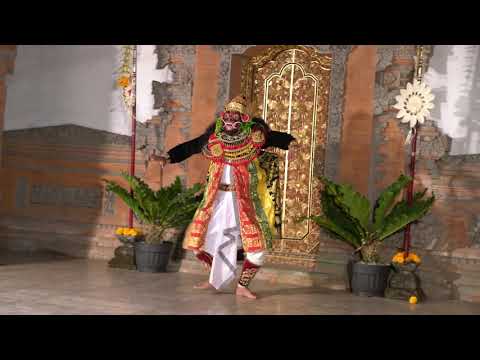
Watch this video on YouTube
Wayang Wong (Dance Drama): Ramayana (Tengalla, Bali, 2018)
The Pandavas, five brothers, with Draupadi forming the sixth, and a dog forming the seventh, set out on their journey. Setting themselves on Yoga, those high-souled ones, resolved to observe the religion of Renunciation, traversed through various countries and reached diverse rivers and seas. Reaching the sea of red waters, there they beheld the deity of fire (Agni) standing before them like a hill. Closing their way, the god stood in his embodied form. The deity of seven flames then addressed the Pandavas, saying, ‘Ye heroic sons of Pandu, know me for the deity of fire. O mighty-armed Yudhishthira, O Bhimasena that art a scorcher of foes, O Arjuna, and ye twins of great courage, listen to what I say! The forest of Khandava was burnt by me, through the puissance of Arjuna and of Narayana himself. Let your brother Phalguna (Arjuna, so called because of the snowy-season month he was born in) proceed to the woods after casting off Gandiva, that high weapon (given to him to fight evil on Earth).”
— Mahaprasthanika Parva – The Book of the Great Journey, Mahabarata
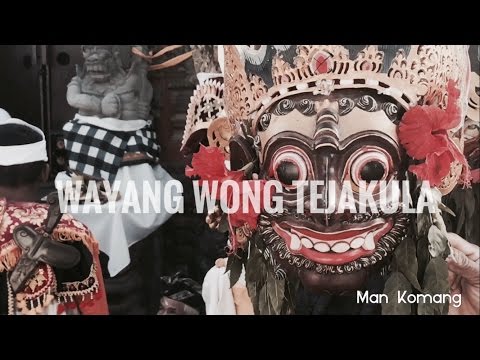
Watch this video on YouTube
More Wayan wong (sacred dance) from Tejakula, Bali
“Hear how a person that is devoted to truth and sincerity, that is self-restrained, pure (in mind), and observant of those acts which lead to purity of body, that is endued with faith, and that has subjugated wrath, attains to success (in the matter of a recitation of the Bharata). He should appoint as reciter one that is pure (of body), that is endued with good and pious conduct, that should be robed in white, that should have a complete mastery over his passions, that is cleansed of all offences, that is conversant with every branch of learning, that is endued with faith, that is free from malice, that is possessed of handsome features, that is blessed, self-restrained, truthful, and with passions under control, and that is beloved of all for the gifts he makes and the honors of which he is the possessor.”
— Svargarohana Parva – The Book of the Ascent to Heaven in the ‘Mahabarata’
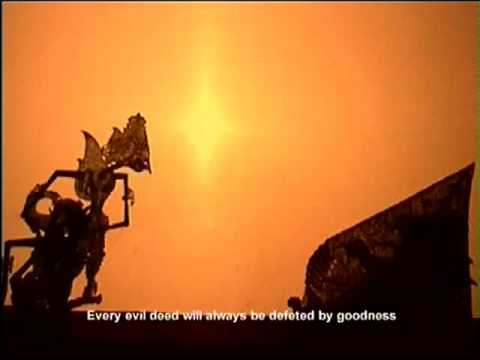
Watch this video on YouTube
The Wayang Puppet Theatre, from UNESCO
Updated 31 March 2023

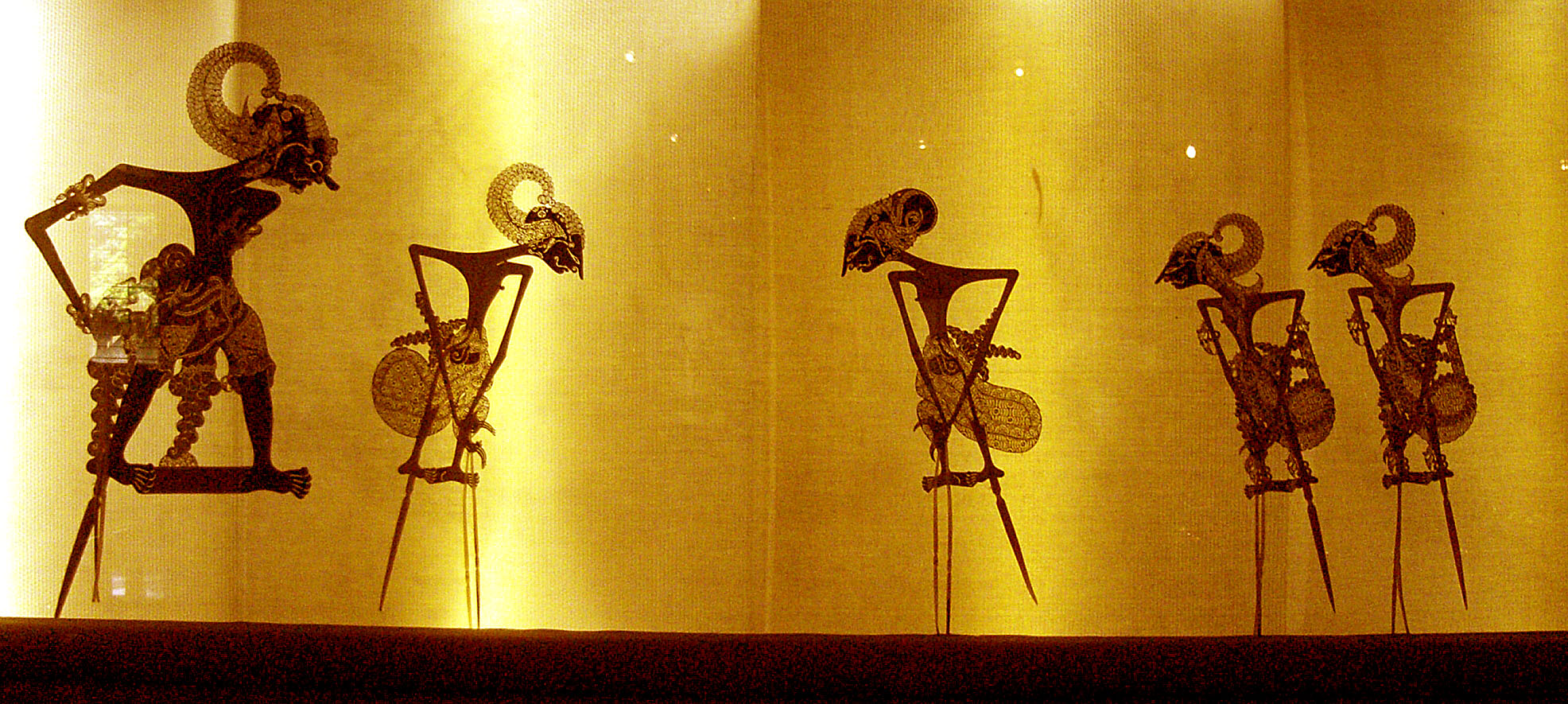


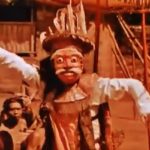
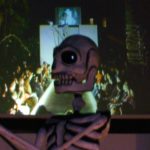
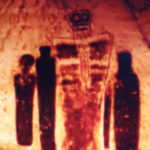
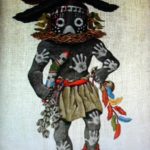






Pingback: References thought the project – LIam Hoole ICP silent book stoolf project
Pingback: Dark Omen: Climate Chaos Converges with Solar Eclipse Wisdom
Pingback: Foreshadows of Ghosts – The Landscapes of Apichatpong Weerasethakul
Pingback: Balinese Dances Reenact the Forces of Nature - WilderUtopia